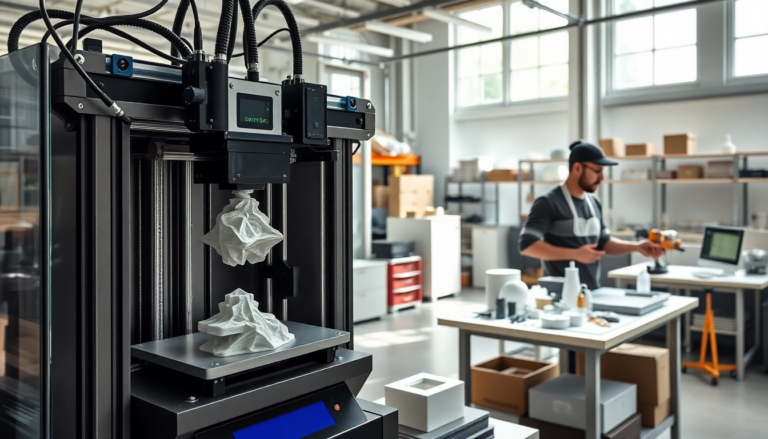Argomenti trattati
The world of manufacturing is experiencing a fascinating transformation, all thanks to the rise of 3D printing technology. This innovative method not only speeds up the production of complex designs but also does so with incredible efficiency and cost-effectiveness. As businesses strive to enhance their production capabilities, grasping the nuances of 3D printing is becoming essential for both manufacturers and investors. Have you ever wondered how this technology could reshape production as we know it?
Market Overview and Current Trends
In recent years, the 3D printing industry has seen remarkable growth, driven by technological advancements and a surge in adoption across various sectors. Industry reports reveal that the market is on track to hit impressive figures, with a compound annual growth rate (CAGR) of over 15% expected in the coming years. What’s fueling this growth? A rising demand for customized products, rapid prototyping capabilities, and the ability to significantly cut waste in production processes are all key factors.
As companies recognize the advantages of incorporating 3D printing into their operations, the range of applications continues to widen. From aerospace to healthcare, this technology is empowering manufacturers to produce intricate components that were once either impossible or economically unfeasible to create. The data clearly shows that investing in 3D printing technologies isn’t just a trend; it’s a strategic move for businesses eager to remain competitive in a swiftly changing market.
Key Areas of Interest and Investment Opportunities
With the rise of 3D printing, certain sectors are emerging as particularly lucrative for investors. Take the automotive industry, for example: it’s harnessing 3D printing for everything from prototyping to manufacturing end-use parts, leading to significant reductions in lead times and costs. Likewise, the healthcare sector is tapping into this technology for creating customized implants and prosthetics. Isn’t it exciting to think about how this could enhance patient outcomes while also lowering manufacturing costs?
Additionally, advancements in materials science are opening doors to new applications. The introduction of high-performance polymers and metals suitable for 3D printing is broadening the range of products that can be produced. Investors should keep a close eye on developments in material innovations, as they will be pivotal in shaping the industry’s future landscape.
Practical Insights for Investors and Businesses
If you’re contemplating entering the 3D printing market, a solid understanding of the technology and its applications is crucial. Engaging with industry experts, attending trade shows, and exploring partnerships with established manufacturers can provide invaluable insights. Are you aware of how regulatory changes and advancements in intellectual property rights related to 3D printing can impact your investments? Staying informed will help mitigate any associated risks.
Moreover, businesses should carefully assess the return on investment (ROI) when integrating 3D printing into their operations. Although initial setup costs may be substantial, the potential for cost savings and increased efficiency can yield significant long-term benefits. Conducting a thorough analysis of cash flow implications and potential cap rates will ensure that investment decisions are well-founded and aligned with market trends.
Future Outlook and Predictions
Looking ahead, the future of 3D printing seems bright, with ongoing research and development fueling innovation. As technology evolves, we can anticipate enhanced capabilities, reduced costs, and wider adoption across industries. The convergence of 3D printing with emerging technologies like artificial intelligence and the Internet of Things (IoT) is likely to create exciting new opportunities for growth and efficiency.
In conclusion, the potential of 3D printing is enormous, and its impact on manufacturing is profound. For both investors and businesses, understanding the intricacies of this technology will be key to unlocking its full potential and capitalizing on the opportunities it presents in today’s manufacturing landscape. Are you ready to explore what 3D printing can do for you?

